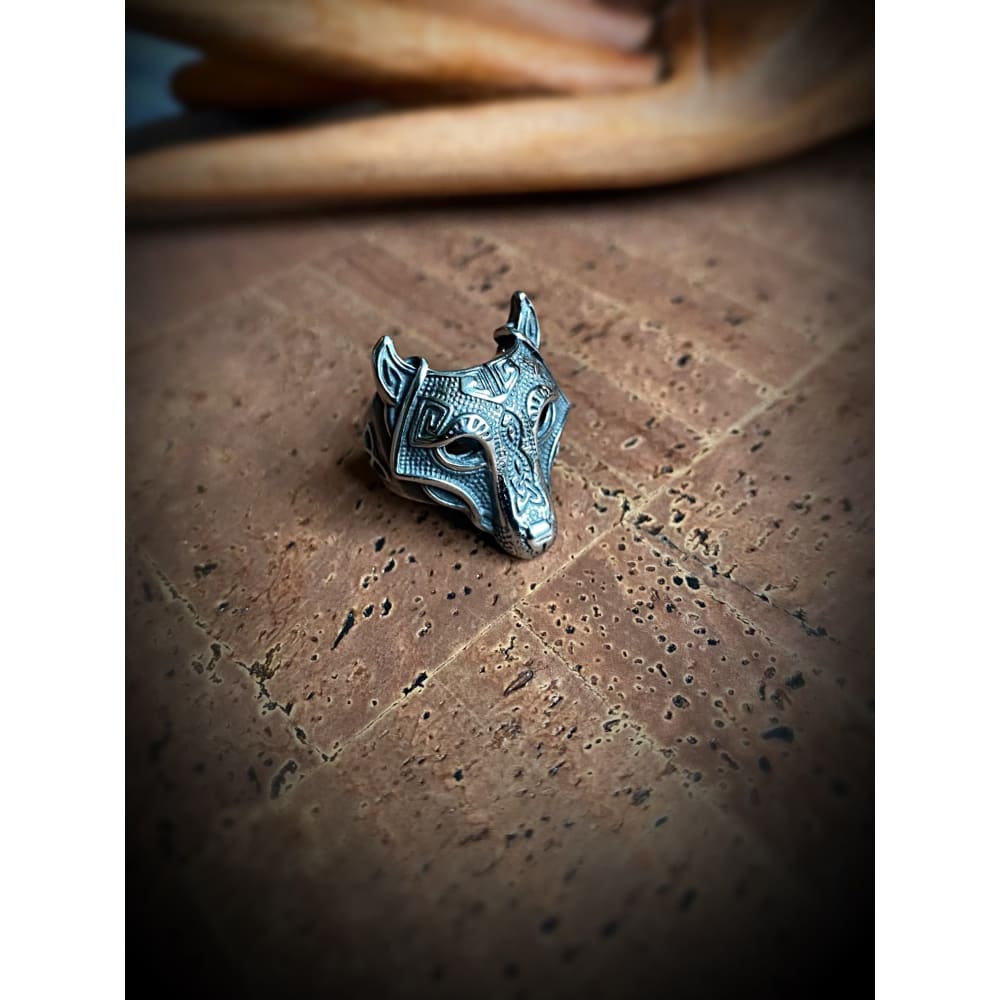Among the diverse array of Viking jewellery, rings stand out as enduring symbols of status, identity, and allegiance. Viking rings were not merely ornamental but held profound cultural and social significance within Norse society. Crafted primarily from silver, gold, and bronze, Viking rings exhibited exquisite craftsmanship, featuring intricate designs and symbolic motifs.
Viking rings served various purposes, ranging from decorative adornments to practical accessories. Signet rings, for example, bore intricate engravings or raised symbols, functioning as personal seals for authentication and identification. These Vikings rings often depicted animals, mythological figures, or runes, embodying the Norse pantheon and ancestral heritage.
Viking rings were also exchanged as tokens of friendship, alliance, or betrothal, symbolising bonds of loyalty and trust. In Norse culture, the act of giving and receiving rings held deep significance, representing oaths of fealty or agreements sealed in honour. Wedding rings, in particular, were bestowed as symbols of enduring love and commitment, marking the union of two souls in matrimony.
Archaeological excavations have unearthed a wealth of Viking rings, providing invaluable insights into their artisanship and symbolism. Discoveries ranging from simple bands to elaborately decorated rings showcase the diversity and artistry of Viking jewellery. Below we'll share some motifs commonly used in ancient Vikings rings and jewellery.
Animal Figures
Animals held significant symbolism in Norse mythology and were commonly depicted in Viking jewellery. Examples include wolves, bears, ravens, eagles, and serpents. These animals often represented strength, courage, protection, or connection to the natural world.

Mythological Figures
Norse mythology was rich with gods, goddesses, and mythical creatures, many of which were depicted in Viking jewellery. Popular figures included Thor with his hammer Mjolnir, Odin with his ravens and wolves, Freyja with her cats, and Loki the trickster.
Rune
The runic alphabet was used by the Vikings for writing, magic, and divination. Runic inscriptions were common on Viking artefacts, including jewellery. Each rune had its own symbolic meaning, and they were often used to convey messages or invoke protective powers.

Geometric Patterns
Viking jewellery often featured intricate geometric patterns, such as interlacing knots, spirals, and braids. These patterns symbolised interconnectedness, continuity, and the cyclical nature of life.

The Tree of Life
The Viking Tree of Life, known as Yggdrasil in Norse mythology, holds significant importance as a cosmic symbol representing the interconnectedness of all things in the universe. Yggdrasil is often depicted as an immense ash tree that links the nine worlds of Norse cosmology. Yggdrasil serves as a cosmic axis, connecting the different realms of existence in Norse cosmology. Its roots extend into three separate realms: one in Asgard (the realm of the gods), one in Jotunheim (the realm of the giants), and one in Niflheim (the realm of ice and mist). Its branches stretch over the entire cosmos, reaching into the heavens.

Yggdrasil is intertwined with various myths and legends in Norse mythology. For example, Odin, the chief god, hung himself from one of the branches of Yggdrasil for nine days and nights to gain wisdom and knowledge of the runes. Additionally, the dragon Nidhogg gnaws at the roots of Yggdrasil, symbolizing chaos and destruction.


Share:
Viking Heritage - The Norseman Legacy
Viking symbols and their meaning